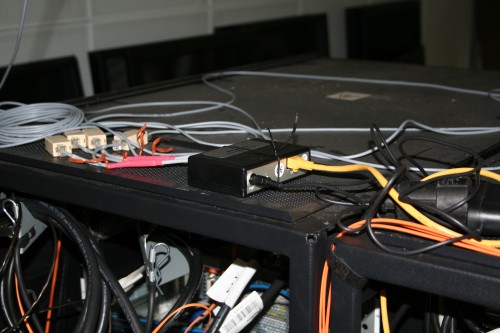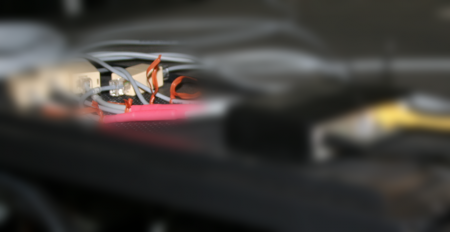Dec 23 17:23:57 epimetheus usb 1-2: new high speed USB device using ehci_hcd and address 2
Dec 23 17:23:57 epimetheus usb usb3: New USB device found, idVendor=1d6b, idProduct=0001
Dec 23 17:23:57 epimetheus usb usb3: New USB device strings: Mfr=3, Product=2, SerialNumber=1
Dec 23 17:23:57 epimetheus usb usb3: Product: OHCI Host Controller
Dec 23 17:23:57 epimetheus usb usb3: Manufacturer: Linux 2.6.25-hardened-r11 ohci_hcd
Dec 23 17:23:57 epimetheus usb usb3: SerialNumber: 0000:00:02.1
Dec 23 17:23:57 epimetheus Initializing USB Mass Storage driver...
Dec 23 17:23:57 epimetheus usb 1-2: reset high speed USB device using ehci_hcd and address 2
Dec 23 17:23:57 epimetheus usb 1-2: device descriptor read/64, error -71
Dec 23 17:23:58 epimetheus usb 1-2: reset high speed USB device using ehci_hcd and address 2
Dec 23 17:23:58 epimetheus usb 1-2: device descriptor read/64, error -71
Dec 23 17:23:58 epimetheus usb 1-2: reset high speed USB device using ehci_hcd and address 2
Dec 23 17:23:58 epimetheus usb 1-2: device not accepting address 2, error -71
Dec 23 17:23:59 epimetheus usb 1-2: reset high speed USB device using ehci_hcd and address 2
Dec 23 17:23:59 epimetheus usb 1-2: device not accepting address 2, error -71
Dec 23 17:23:59 epimetheus usb 1-2: USB disconnect, address 2
Dec 23 17:23:59 epimetheus sd 4:0:0:0: Device offlined - not ready after error recovery
Dec 23 17:23:59 epimetheus sd 4:0:0:0: [sde] Result: hostbyte=0x01 driverbyte=0x00
Dec 23 17:23:59 epimetheus end_request: I/O error, dev sde, sector 1229380295
Dec 23 17:23:59 epimetheus end_request: I/O error, dev sde, sector 1229380535
Dec 23 17:23:59 epimetheus Aborting journal on device sde1.
Dec 23 17:23:59 epimetheus ext3_abort called.
Dec 23 17:23:59 epimetheus EXT3-fs error (device sde1): ext3_journal_start_sb: Detected aborted journal
Dec 23 17:23:59 epimetheus Remounting filesystem read-only
Dec 23 17:23:59 epimetheus EXT3-fs error (device sde1) in ext3_ordered_writepage: IO failure
Dec 23 17:23:59 epimetheus __journal_remove_journal_head: freeing b_frozen_data
Dec 23 17:23:59 epimetheus __journal_remove_journal_head: freeing b_frozen_data
Dec 23 17:23:59 epimetheus __journal_remove_journal_head: freeing b_frozen_data
Dec 23 17:23:59 epimetheus __journal_remove_journal_head: freeing b_frozen_data
Dec 23 17:23:59 epimetheus __journal_remove_journal_head: freeing b_committed_data


